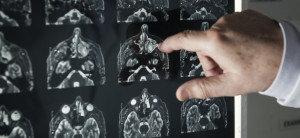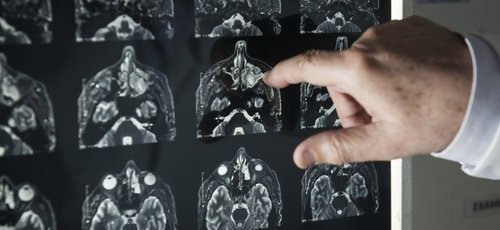Assessment of the permeability of the blood-brain barrier in an experimental model of posterior reversible encephalopathy syndrome through neuroimaging exams
RESEARCH PROJECT COMPLETED.
Project Coordinator: Luiz Carlos Porcello Marrone, MD, PhD e Jaderson Costa da Costa, MD, PhD
Job Summary: Posterior Reversible Encephalopathy Syndrome ( Posterior Reversible Encephalopathy Syndrome - PRES) is a clinical radiological entity characterized by headache, altered level of consciousness, seizures and visual impairment and is associated with vasogenic edema in the white matter of the brain, predominantly affecting the occipital and parietal lobes. The pathophysiology of PRES remains totally unknown. Two theories are more prominent: vasogenic theory and cytotoxic theory.
The cytotoxic theory suggests that the sudden and intense increase in blood pressure would cause cerebral vasoconstriction, leading to endothelial damage caused by hypoxia, followed by vasospasm and the formation of cytotoxic edema. However, the reversibility of the lesions goes against this hypothesis. The vasogenic theory would result from impaired cerebral autoregulation, which would cause vasodilation, increased vascular permeability, rupture of the blood-brain barrier causing vasogenic edema. The pathophysiology of PRES is also closely related to endothelial dysfunction, especially in cases without severe hypertension, such as pre-eclampsia or cytotoxic therapies. Several factors can trigger this syndrome, most commonly: acute elevation of blood pressure, impaired renal function and immunosuppressive therapy.
Other possible etiologies or related factors are: eclampsia, systemic lupus erythematosus (SLE), transplants, neoplasia and its treatment, systemic infections, acute or chronic kidney disease. In a previous project, the anatomopathological study of experimental models was carried out, which were submitted to a surgical procedure in order to mimic a PRES picture. In this study, changes in the permeability of the blood-brain barrier are evident in some animals submitted to surgical procedure; however, it was not possible to prove the reversibility of the brain injury. There is no defined experimental model of PRES that proves reversibility.
The objective of the study is to develop an experimental PRES model that proves the reversibility of the blood-brain barrier permeability. An experimental model of PRES will be developed using the surgical technique for reducing the pressure of uterine perfusion with the placement of a silver clip in the aorta and uterine arteries. The models submitted to this procedure will be evaluated by neuroimaging exam every 48 hours in order to evaluate the reversibility of the edema. A database will be developed and statistical analysis of the results will be performed using Epi-Info.
Through the establishment of the experimental model of reversibility of cerebral edema, new research possibilities are opening up in the area with the aim of reverting the edema earlier.
Check out the articles published on the topic:
Later Reversible Encephalopathy Syndrome in a Child with Acute Lymphoblastic < / p>
Posterior reversible encephalopathy syndrome: differences between pregnant and non-pregnant patients
Posterior Reversible Encephalopathy Syndrome Associated with FOLFOX Chemotherapy
Later Reversible Encephalopathy Syndrome Following a Scorpion Sting
Posterior reversible encephalopathy syndrome
Gemcitabine Monotherapy Associated with Posterior Reversible Encephalopathy Syndrome



